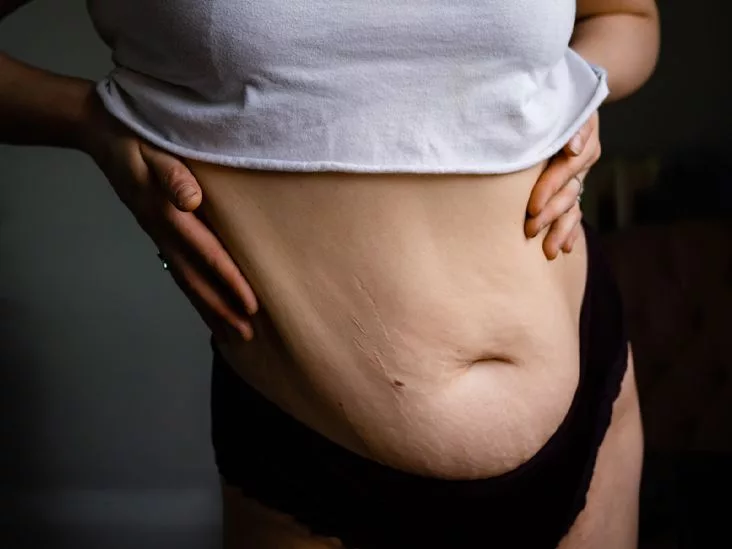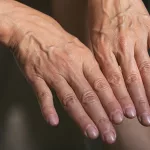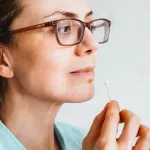If you’ve finally hit that milestone on the scale and the mirror still feels like a stranger, you’re not alone. Many people discover that shedding pounds can bring a surprising companion: body dysmorphia after weight loss. It’s not just “being picky” about how you look; it’s a genuine mental‑health challenge that can dim the shine of an otherwise huge achievement. In this article we’ll unpack why it happens, how to spot it, and—most importantly—what you can do right now to feel comfortable in the skin you’ve earned.
Understanding the Condition
What Is Body Dysmorphic Disorder?
Body dysmorphic disorder (BDD) is a mental‑health condition where a person becomes intensely pre‑occupied with perceived flaws in appearance—flaws that are often invisible to others. The preoccupation is persistent, distressing, and can dominate daily life. According to Healthline, BDD differs from occasional body‑image doubts because the thoughts are intrusive, repetitive, and can drive compulsive behaviors.
Why Weight Loss Can Trigger BDD
Think of your brain as a camera that needs time to refocus after a big zoom. When you lose a significant amount of weight—especially quickly—the external image changes, but the internal self‑image often lags behind. This “body‑brain lag” can create a disconnect that feels like you’re looking at someone else in the mirror. Some people even call it “ghost‑fat” or “phantom fat,” where the mind insists you’re still larger despite the numbers on the scale. A study describes this phenomenon as a classic example of weight‑loss‑induced body dysmorphia.
Who’s Most at Risk?
- Anyone who has undergone rapid weight loss—bariatric surgery, intense diet, or high‑intensity training.
- People with a history of weight loss anxiety, depression, OCD, or previous body‑image concerns.
- Those who receive excessive comments about their new shape (even well‑meaning ones) can feel pressured to “look perfect.”
Recent clinical notes from bariatric clinics show that up to 3 % of patients develop noticeable BDD symptoms after surgery, but the true number is likely higher because many never speak up. As noted by VIPSurg, the focus on numbers, measurements, and photos can turn a healthy habit into obsessive checking.
Spotting the Red Flags
Cognitive Signs to Watch
- Constant negative thoughts about a specific body part (e.g., “my stomach is still huge”).
- Disbelief when friends or doctors compliment your progress.
- Fear that you’ll “gain it all back” even after months of stability.
Behavioral Symptoms That Speak Volumes
- Checking the mirror dozens of times a day—or avoiding it entirely.
- Excessive grooming—layering makeup, changing clothes repeatedly to “hide” perceived flaws.
- Weighing yourself multiple times per day, even after you’ve hit your goal.
- Social withdrawal because you dread being “seen” in public.
Emotional Impact
When these thoughts and behaviors become a daily routine, anxiety, shame, and even depression can settle in. They may start to affect work performance, relationships, and overall quality of life. The key is to notice the pattern early—before it spirals into something more entrenched.
Quick Self‑Check (5‑Minute Scan)
- Do you catch yourself doubting compliments within minutes?
- Do you feel a “tightness” in your chest when you look at photos?
- Do you spend > 30 minutes a day checking mirrors or taking selfies?
- Do you avoid social events because you fear judgment?
- Do thoughts about your body dominate your day?
If you answered “yes” to three or more, it might be time to explore a deeper conversation with a mental‑health professional.
Managing the Feelings
Professional Help: Therapy & Medication
The gold standard for BDD is cognitive‑behavioral therapy (CBT). CBT teaches you to challenge distorted thoughts, replace compulsive mirror‑checking with healthier habits, and gradually reduce anxiety. In many cases, selective serotonin reuptake inhibitors (SSRIs) are prescribed alongside therapy to ease the obsessive cycle.
According to MercyOne, patients who combined CBT with medication reported a 60 % reduction in symptom severity within three months.
Self‑Help Strategies You Can Start Today
Re‑frame the Mirror
Instead of hunting for flaws, ask yourself: “What does this reflection say about the hard work I’ve done?” Write down three things you appreciate—maybe it’s the way your clothes fit, the stamina you now have, or the way your posture has improved. Over time, those positive notes crowd out the critical voice.
Limit Comparison Triggers
Social media can be a double‑edged sword. Unfollow accounts that make you feel “less than” and follow those that celebrate real, unfiltered journeys. Set “mirror‑free” evenings: no selfies, no weight‑check, just a favorite TV show or a relaxing bath.
Celebrate Non‑Appearance Wins
Weight loss is a fantastic milestone, but your new body can also give you:
- More energy to chase a grandchild around.
- Improved blood pressure, sleep, and mood.
- Confidence at work or in a hobby you once avoided.
Address Loose Skin & Clothing Fit
Excess skin can amplify BDD thoughts. Talk to your surgeon about timelines for skin removal—often it’s best to wait until your weight stabilizes. Meanwhile, find clothes that fit comfortably and make you feel good. Tailored pieces can hide excess skin while still showing off your progress.
Building a Support Network
Don’t walk this road alone. Peer‑support groups—whether in‑person meet‑ups, online forums, or even an Instagram community—allow you to hear stories that echo your own. Hearing that “I also feel like I’m still the old size” can be unbelievably validating. MercyOne recommends weekly check‑ins with a trusted friend who’ll listen without judgment.
When to Seek Immediate Help
If you notice any of the following, reach out right away:
- Thoughts of self‑harm or suicide.
- Compulsive rituals that eat up more than two hours a day.
- Severe depression that doesn’t lift with usual coping tools.
Real‑World Stories
“The 150‑lb Drop & the Mirror That Refused”
Laura, a 38‑year‑old mother of two, lost 150 lb after bariatric surgery. Friends flooded her with compliments, yet she spent hours hiding in the bathroom, scrutinizing a “ghost of her old self.” “I felt like I was looking at a stranger who didn’t belong to me,” she told her therapist. Through CBT, Laura learned to name the intrusive thought—”I’m still big”—and replace it with a fact: “I’ve lost 150 lb, and my blood pressure is normal.” Six months later, she stopped avoiding mirrors altogether.
“Ghost Fat After Rapid Weight Loss”
Mark, a 45‑year‑old runner, dropped 80 lb in a year using a low‑carb plan. He kept hearing a mental echo of “still overweight,” a classic “ghost‑fat” experience. A physiotherapist suggested body‑positive visualization: imagine your muscles as sturdy pillars, not as excess. Mark paired this with a support group for post‑bariatric patients and soon found himself enjoying his new speed without the mental fog.
Practical Tools & Resources
Screening PDF
Download our free Body‑Dysmorphia Self‑Assessment. It guides you through a quick questionnaire and tells you when it’s time to call a professional.
Hotlines & Help Centers
- National Suicide Prevention Lifeline: 988
- BDD‑Specialized Therapist Directory (search “body dysmorphic disorder therapist” + your city).
Further Reading
For a deeper dive into the science, read the peer‑reviewed article in the Journal of Clinical Psychiatry that outlines prevalence and treatment efficacy. Also, explore the Vanderbilt Health explanation of phantom fat for a medical perspective.
Conclusion
Discovering body dysmorphia after weight loss can feel like stepping into a fog after finally reaching a summit. The good news? The fog lifts when you blend professional guidance with everyday kindness toward yourself. Recognize the signs, lean on therapy or supportive friends, and celebrate the real, measurable wins that go far beyond a mirror’s reflection. You’ve already proved you can transform your body—now let’s work together to bring your mind along for the journey.
What’s your story? Have you noticed any of these thoughts after losing weight? Share in the comments, join our support forum, or download the self‑assessment to start your next step toward confidence.


















Leave a Reply
You must be logged in to post a comment.